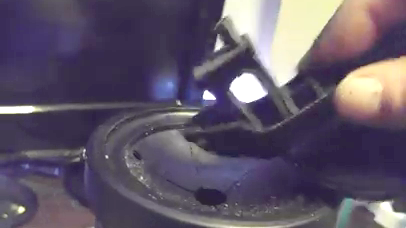If you’ve ever spent time watching the goings-on at a seaport, you must have seen tugboats at work: those little boats that push, pull and nudge enormous cargo ships through tight corners in the harbor. They manage to do that thanks to hugely powerful engines sitting inside their relatively small hulls; their power-to-tonnage ratio can be ten times that of most commercial ships.
One hardware hacker who enjoys building similarly-overpowered machinery is [Luis Marx], and it might not come as a surprise that his latest project is an actual tugboat. Living on the shores of Lake Constance in southern Germany, [Luis] likes to spend time on the water, but got fed up with the chore of paddling. Local regulations restrict the use of outboard motors but allow the use of R/C model boats; therefore, building an R/C tugboat to move yourself around the lake should be perfectly legal.
While we’re not sure if the Lake Constance Police will follow the same reasoning, [Luis]’s model tugboat is a wonderful piece of engineering. With a design inspired by 3DBenchy, the standard 3D printer benchmark that probably anyone with a 3D printer has printed at some point, it took about 30 hours to create the parts plus a generous helping of epoxy resin to make it all waterproof. A beefy lithium-ion battery pack drives two brush-less DC motors designed for racing drones, which together can put out nearly one kilowatt of power.
That, unfortunately, turned out to be way more than the little boat could handle: any attempt at using it simply caused it to leap out of the water and land on its back. Setting the motor controller to around 50% made it much more controllable, yet still strong enough to move [Luis] around on his standup paddle board. The boat is controlled through a custom-made handheld R/C controller that communicates with the ESP8266 inside the boat through WiFi. With no rudder, left-right control is effected by simply reducing the power of one motor by half.
A fully-charged battery pack provides enough juice for about 40 minutes of tugging, so it’s probably a good idea to bring along paddles in any case. Unless, of course, you’ve also got a solar-powered autonomous tugboat ready to come to your rescue.















